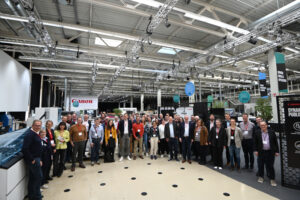It may happen that IT causes gray hair to grow. This phenomenon is said to have been observed several times during the introduction of complex ERP systems, for example. Here, however, it’s the other way around: gray hair takes care of IT. And that can make both sides happy. For companies, IT retirees are a potential pool of experienced experts who are familiar with processes, projects and people. They know about the written and, almost more importantly, unwritten structures and laws in the internal relationship. They know each other and know exactly how to assess each other. They have already made their careers and now have completely different interests than gaining legroom on the ladder to success.
For IT veterans, what counts is the joy of the job, dealing with tricky problems and the sense of achievement in solving them. They see productive work as a value in itself. It is nice – and sometimes necessary – to receive a monetary reward for this. But especially after retirement, many retirees realize that professional employment is not just paid work, but also an important source of experience, contact and satisfaction. Instead of chasing after the so-called work-life balance, which falsely suggests that work and life are antagonisms and have to be balanced against each other, they are instead trying to achieve a work-free time balance. In doing so, they are, quite incidentally, a practical role model for those who are fully engaged in working life. This experience is usually only made after the break, when the originally welcome idleness turns into agonizing boredom. It proves to be true again and again: “You don’t know what you got, until you lose it!”.
In physically demanding professions such as construction worker, farmer or roofer, however, there is a kind of natural age limit. Wanting to knock solar panels onto houses at the age of 68 is not a sensible option. The situation is different in professions where work is mainly done with the head, which should generally be the case in IT. In this sense, IT specialists are just as privileged as authors, painters, musicians and perhaps even politicians. One could argue that the speed of innovation is particularly high in IT (see Moore’s Law), meaning that the half-life of expertise is particularly short. But who, if not a seasoned IT professional, should be able to deal with this properly? Aren’t they all experts at constantly coming to terms with the next groundbreaking innovation, the latest hype, the latest disruptive technology, and making something clever out of it? That doesn’t wear off. On the contrary – it leaves its mark!
That’s what makes gray-haired programmers, administrators and data analysts so valuable. They are fact- and results-oriented, often have rare insider knowledge of legacy software and systems, are highly resistant to stress, can often only smile about operational blindness, have the time and leisure to take the next generation by the hand and have a wealth of experience behind them that recognizes many a wrong turn before it becomes a dead end. They also have the independence to say so openly if necessary and to counter the company’s internal mainstream for good reasons. You couldn’t wish for a better mirror than such a constructive corrective without vested interests, even if it sometimes hurts. Their value for project work is therefore just as high as their positive influence on the corporate culture. What an ideal HR profile!



